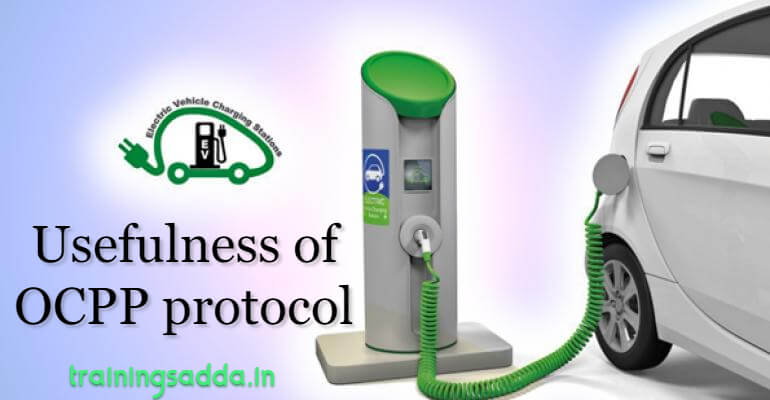How OCPP Protocol Can Define The Future of Mobility and Make Our World Livable?

Electric vehicles or EVs are the future. Whether it is a developed country or developing country, they are pushing car manufacturers to produce more and more electric vehicles for the sake of betterment of our future. Civilians also understand the urgency to go after more EVs which are environmental-friendly and cost-efficient transportation solution.
In recent years, it has been a significant increase in the number of EVs. According to the Global EV Outlook, more than 5 million EVs were running on the roads at the beginning of 2019. This number is 73% more than the number of EVs running on the roads in 2018.
Read more: 10 Digital Marketing Tools to Upscale a New Business
Because of the rapid expansion in the EV market and EV business, other sub-businesses have also blossomed. One of the most profitable sub-businesses of EV business is EV charging station business. According to the Centre for American Progress, the USA alone will need more 330,000 EV charging station by 2020 to satisfy the large demand in the EV market.
However, the thing which makes EV charging station business a challenge is a fact that EV charging stations don’t work like conventional gas stations. They are smart and have the ability to communicate with the central management system. They allow the EV owners to charge their vehicles by scanning the code. They show EV owners the estimated time to fully charge the EV. They accept the payment. They alter the power supply based on the need or battery capacity.
Learn more: Wireless Fire Detection And Alarm System For your Business
But how? How EV charging stations which look like rectangle boxes, can work as if it is the product from the future?
We are going to discuss the same in this blog. We will study the major protocol linking EV charging stations with central management software and an EV charging station mobile app. We will also wrap our mind around that protocol’s history and features with its working model.
Table of Contents
What is the OCPP protocol?
The OCPP protocol or Open Charge Point Protocol was defined by the OCPP forum, led by two companies from the Netherlands. It is simply a syntax or you can call it language which is used to communicate between networked charging stations and charging station management system.
Learn more: NPS vs CES vs CSAT: What Works Best for Small Businesses?
The reason by OCPP forum initiated OCPP protocol is to create an open protocol that let EV charging stations, charging station management system and different vendors communicate with each other. In fact, it is currently utilized by a large number of vendors and since it is open-source protocol, they modify it according to their need.
The first version of the OCPP protocol (OSCP 1.0) comes with limited functionality. However, the latest version of the OCPP protocol is rewarded with many groundbreaking features. Refer the following image to understand different features available in a different versions of the OCPP protocol.
Why OCPP protocol is very important in the EV charging station business?
To understand why the OCPP protocol plays a significant role in the EV charging station business, we first need to understand how an EV charging station works.
Learn more: How to Grow Your Startup Business Effectively
In EV charging station business, business owners prefer to operate unmanned EV charging stations with a mobile app and EV charging station management software to reduce the cost. The mobile app which shows the nearby EV charging stations to the users, allows them to book the spot, to claim the booking by scanning the QR code printed on charging stations and to pay from the app. However, a mobile app isn’t the data warehouse. It just shows the data which comes to it from charging station management software. And the data that EV charging station management station gathers, comes from the EV charging station itself.
If you can find it out, the only important thing in this whole process is the connectivity between a mobile app, EV charging station, and EV charging station management software. Without establishing a connection between these three components, it is impossible to run an unmanned EV charging station. But it will not happen as OCPP comes to rescue here. It connects mobile app, EV charging station and EV charging station management software and shares all necessary information with each other.
Read more: How to Use Automation to Keep a Tight Sales Pipeline
Following image shows the architecture of OCPP-enabled-EV charging station. Here, you can clearly see that charging station shares data with charging point management system which later shows it on the user’s mobile via the customer management system.
Following are the more advantages an OCPP protocol offers.
- Reservation: EV owner can book his spot from the app.
- Remote Trigger: Charging station owner can remotely operate the functionality of charging stations.
- Smart Charging: Charging station automatically reduces or increases the power supply for the sake of highest ever efficiency.
- Data transfer: Any vitally important data including user data and charging station data can be shared between EV charging station management software, mobile app, and EV charging station.
- Diagnosis: It prevents problems from occurring via advanced warning. Not only this, it identifies and solves the problems remotely.
- Reporting: OCPP obtains detailed information of charging station’s current state and reports it to system admin
The working model of OCPP or How OCPP works?

Finally the fun part!
The whole process triggers as soon as a charging station is turned on. The moment it is turned on, OCPP attempts to make a contact with the EV charging station management software or IT backend.
IT backend now verifies the identity of charging station. If it is known, it gets accepted. And if is not known, it goes to the error mode.
Learn more: Ultimate Guide for Offshore Software Development
So, now when a charging station is verified by the IT backend, it sends a ‘heartbeat’ to EV charging station management system at an interval to inform that charging station is still active. In response to this message, IT backend sends the current time and date of the system to the charging station.
When a user requests to start charging, the authorization process sparks. It authorizes the user and his request and either allows or denies the charging request.
If the user is allowed, the power supply nozzle can now be unlocked. As soon as it is unlocked and plugged in the EV vehicle, OCPP sends a StartTranscation message to the IT backend. IT backend verifies the source of the message and lets charging station to start the power supply.
When a user wishes to stop the charging, he needs to identify himself at a charging station by either using a mobile app or by charge pass. IT backend authorizes the user and relays a StopTransaction message to the charging station to stop the charging.
In the nutshell:
A billion-dollar EV industry is fueling the EV charging station business. And the OCPP protocol which is clever enough to make a charging station smart, creating many business opportunities for those entrepreneurs who want to jump into EV charging station business. This OCPP protocol lets business owners automate the whole business process and provide highest ever satisfaction rate. However, the current market for the EV charging station is very limited and the usage of OCPP is very restricted. The only reason why OCPP is still in the existence is its individuality and of course the future use.
Read more: Reasons to Prefer an Online Task Management Software
About the Author:
Vishal Virani is a Founder and CEO of Coruscate Solutions, a leading e-scooter app development company. He enjoys writing about the vital role of mobile apps for different industries, custom web development, and the latest technology trends.
Comments
0 comments




